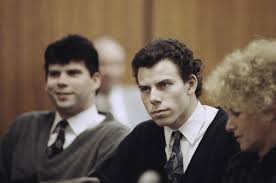
Introduction
The case of Erik Menendez has remained one of the most controversial and publicized trials in American legal history. In the early 1990s, the Menendez brothers became the center of a sensational trial that highlighted issues of familial abuse, mental health, and the judicial system. The significance of this case lies not only in the heinous crime committed but also in the ongoing discussions it ignited regarding the complexities of the human psyche and the impacts of upbringing on behavior.
Background of the Case
On August 20, 1989, Erik Menendez, then 18, and his brother Lyle, 21, shot their wealthy parents, Jose and Mary Menendez, in their Beverly Hills mansion. The brothers initially framed the event as a home invasion. However, as the investigation unfolded, evidence pointed towards a far more complicated reality that stemmed from years of allegations against their parents of emotional and sexual abuse.
The Trials and Public Response
The trial, which began in 1993, captivated the nation, thanks in part to the brothers’ story about decades of abuse, which they claimed motivated their actions. The defense argued that the brothers were acting in self-defense due to the trauma inflicted upon them. However, the prosecution argued that the brothers were motivated by greed, seeking their parents’ wealth. After a highly publicized trial, the jury could not reach a verdict in the first instance, leading to a retrial in 1995, which resulted in a guilty verdict and life sentences for both men.
Current Developments
As of now, Erik Menendez, who is currently serving life in prison without parole, has become somewhat of a media personality, appearing in documentaries and interviews reflecting on the nature of his crime and his life. The brothers’ story continues to provoke discussions about the complexities of mental health, the extent of parental influence, and the dismantling of justice systems that often overlook victims of familial abuse.
Conclusion
The case of Erik Menendez serves as a poignant reminder of the layers of trauma that can lead to tragic outcomes. As public opinion continues to evolve and more information comes to light, questions still remain about justice and accountability. For readers, this case not only illustrates the potential failings of the judicial system but also prompts a deeper conversation about the responsibilities of society to protect those who suffer in silence and the long-lasting impacts of familial abuse.



